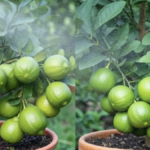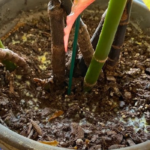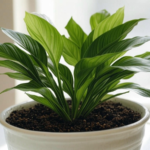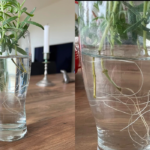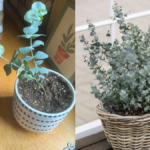Learn how to care for your ZZ Plant Care Guide the right way from someone with years of hands-on gardening experience. Watering, light, soil, temperature—everything explained simply
Table of Contents
ZZ Plant Care Guide – Real Tips from My Gardening Experience
Over the years, I’ve grown many indoor and outdoor plants, but the one that continues to surprise me with its simplicity and toughness is the ZZ plant. Also known as Zamioculcas zamiifolia, this plant has been a part of my indoor garden for several years now.
In this guide, I’ll share everything I’ve learned from growing and caring for ZZ plants—not just what books or YouTube videos say, but real tips from experience. Whether you’re a beginner or someone who always forgets to water your plants (we’ve all been there), this care guide is for you.
What is a ZZ Plant?
The ZZ plant is a tropical houseplant native to Eastern Africa. It’s famous for its thick, glossy leaves that reflect light beautifully and stay green all year round. The reason it’s become so popular in recent years? It’s almost indestructible.
You can forget to water it, place it in a dark corner, or even leave it alone for weeks—and it will still look happy and healthy. That’s what makes it perfect for Indian homes, small apartments, or even office desks.
Why I Love ZZ Plants – My Honest Experience
I still remember the first ZZ plant I bought. It sat in the corner of my bedroom near a window that hardly got any sunlight. I didn’t water it for two weeks because I completely forgot. But when I checked it again—it still looked fresh and untouched by time. That’s when I realized this plant is a true warrior.
Since then, I’ve placed ZZ plants in different spots—living rooms, offices, balconies, and even washrooms. It never disappoints. If you want a plant that grows slowly but steadily and doesn’t ask for much, this is the one.
ZZ Plant Light Requirements for Healthy Growth
One of the best things about the ZZ plant is that it can survive in low-light conditions. I’ve placed it in rooms with only artificial light, and it still grows.
However, if you want to see faster growth and shinier leaves, place it where it gets bright, indirect sunlight—like near a window with sheer curtains.
Avoid:
- Direct sunlight – it can burn the leaves.
- Total darkness – it survives but grows very slowly.
How Often Should You Water a ZZ Plant?
If you take just one thing from this post, let it be this: Do not overwater your ZZ plant.
This plant stores water in its roots (rhizomes), so it can go weeks without a drink.
My personal watering routine:
- Summer: Once every 10–14 days
- Winter: Once every 20–25 days
- Always check the top 2–3 inches of soil before watering
Once, I gave one of my ZZ plants water twice in a week (rookie mistake), and within a few days, its leaves started turning yellow. That’s how I learned ZZs are like camels—they store and survive!
Best Soil for ZZ Plant – My Personal Mix
ZZ plants hate soggy soil. After some trial and error, I created a soil mix that works beautifully:
- 50% regular garden/potting soil
- 30% cocopeat or peat moss
- 20% sand or perlite for drainage
This mix allows excess water to drain out while keeping the roots comfortable.
ZZ Plant Temperature Requirements for Best Growth
ZZ plants grow best between 18°C to 28°C (65°F to 85°F). Most Indian homes fall within this range, so it’s perfect.
Just make sure your plant isn’t exposed to extreme cold or kept near an air conditioner vent. During winters, bring it indoors if temperatures drop below 10°C.
Does ZZ Plant Need Humidity?
A lot of tropical plants need high humidity, but not the ZZ. That’s another reason I love it—it doesn’t demand special treatment.
Even in dry air (like during Gujarat’s hot summers), my ZZ plants continue to do well without misting or humidifiers.
Fertilizer for ZZ Plant – What I Use
ZZ plants don’t need much food. In fact, I only feed mine during the growing season.
What I use:
- Balanced liquid fertilizer (NPK 19-19-19 or 20-20-20)
- Diluted to half strength
- Once every 2–3 months (March to September)
Avoid fertilizing in winter—let your plant rest.
When to Repot a ZZ Plant?
ZZ plants grow slowly, so you won’t need to repot often. I usually do it every 2–3 years, or when I see roots coming out from the drainage holes.
When repotting:
- Choose a pot 1–2 inches larger
- Use fresh soil mix
- Do it in early spring for best results
Common ZZ Plant Problems and Solutions
| Problem | Cause | Solution |
|---|---|---|
| Yellow Leaves | Overwatering | Allow soil to dry completely and reduce watering frequency. |
| Drooping Stems | Underwatering or Low Light | Water when soil is dry and place in bright, indirect light. |
| Brown Leaf Tips | Dry air or low humidity | Trim tips and mist occasionally if needed. |
| Soft, Mushy Stems | Root rot from overwatering | Trim damaged stems and repot with fresh soil. |
| Mealybugs | Pest infestation | Wipe leaves with neem oil or mild soapy water. |
How to Propagate a ZZ Plant at Home
I’ve tried all methods, and this is what worked best for me:
- Rhizome division – The easiest and quickest. Just split the plant while repotting.
- Leaf cutting in soil – Takes 2–3 months but works. Keep the soil moist but not wet.
- Stem cutting in water – Fun to watch roots grow, but takes time.
It’s a slow-growing plant, so patience is key here.
FAQs – ZZ Plant Care (Real Questions from My Readers)
Can ZZ plant survive without sunlight?
Yes, but growth will be slow. Bright, indirect light is better.
Is ZZ plant lucky?
Many believe it’s a symbol of prosperity and good energy—especially in offices and workspaces.
How tall does a ZZ plant grow?
With time and care, it can reach 2 to 3 feet indoors.
Final Thoughts – Why You Should Definitely Get a ZZ Plant
If you’re someone who wants to keep a plant but doesn’t have time or knowledge—ZZ Plant is your best friend. It’s simple, beautiful, and doesn’t complain.
From my experience of growing it over the years, I can confidently say—it gives more than it takes. It’s also a great gift for friends or relatives who are just starting their plant journey.
Read More Post
How to Take Care of a Lavender Plant (Indoor & Outdoor) – Fast Growth Guide

